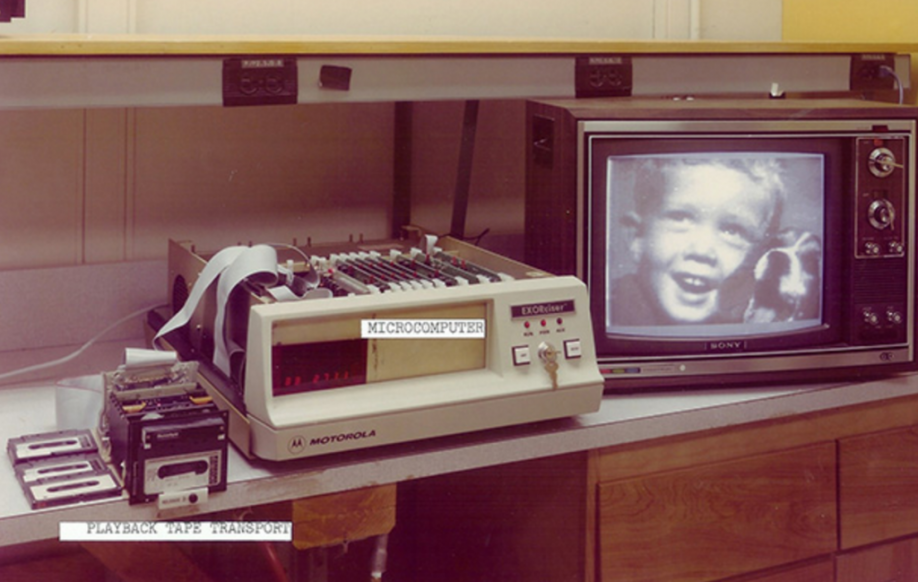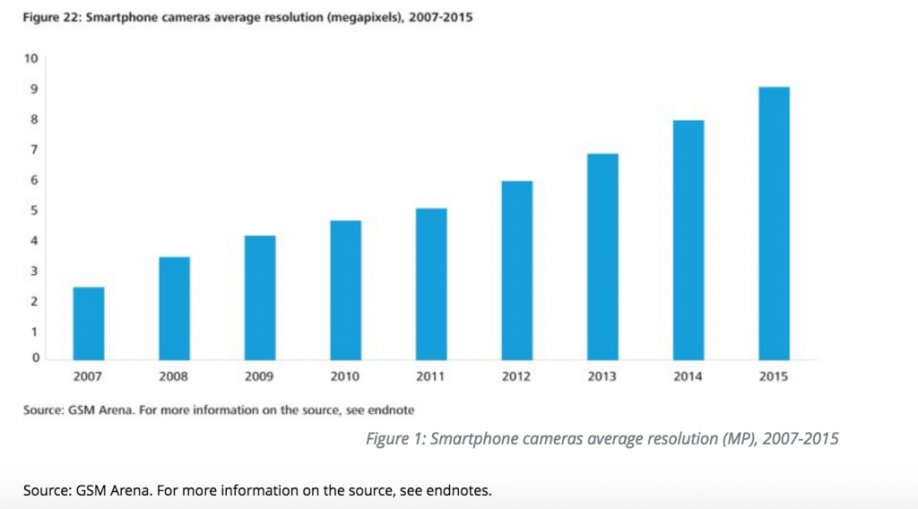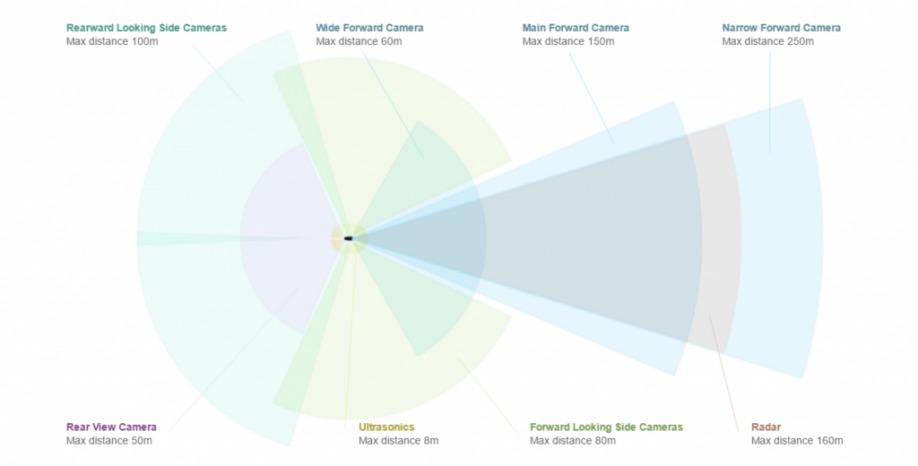One can only imagine where camera technology is heading if autonomous cars and smart fridges are becoming the new norm. What about imaging systems in your clothes, on your skin or on your pets? Its all in the realm of possibility.
Imaging Gets Personal: 4 surprising ways cameras are having an impact on our lives
Sarah Turnbull | Teledyne DALSA
As technology gains a foothold in our daily lives, so do cameras. Some have a higher purpose – science or art… and others are simply a part of our rapidly evolving consumer world. Teens use camera-based social media platforms to connect with one another while law enforcement officers use cameras to prevent crime and police reckless driving. Imaging devices are suspended from drones, mounted on military robots, and embedded in USB sticks. With the spread of cheaper and better imaging options, we have become a society committed to documenting and monitoring the world around us.
How far we’ve come
Steve Sasson – inventor of the first digital camera – probably didn’t realize his 1975 creation would have the sort of impact it has today. Weighing almost eight pounds, Sasson’s device took almost a minute to process a black and white image. Almost two decades later, in 1994, the Apple QuickTake 100 – designed by Kodak and manufactured by Chinon in Japan – was believed to be the first digital camera under $1,000 to hit the consumer market. Today you can purchase a higher quality digital camera for less than $100.

In recent years, high-quality cameras have also exploded onto the mobile phone scene. For many, a smartphone is their primary lens, so much so that Deloitte Global predicts that over the course of 2016, 90 per cent of the 2.5 million photos shared or stored online will be taken with a smartphone.

Camera quality is a major selling point – the pièce de résistance – of most smartphones on the market. At the September iPhone 7 reveal, Apple’s Senior Vice-President of Marketing, Phil Schiller, said the camera “is perhaps the most beloved feature” of the iPhone and of smartphones in general.
So where are we putting these cameras now?
1.Wearable Tech
Leave it to Google to build cameras into wearable accessories. In May 2015, the Google Glass was made available to the public for a cool $1,500. Put simply, it’s a pair of eyeglasses that has smartphone capabilities, producing digital information at eye-level. Users communicate with the Internet using simple voice commands. It can also take 5MP photos and record 720p HD video on command.
The launch of this gadget appealed to some tech enthusiasts, but it also sparked innovation in the medical world. Paramedics in Chicago used the Glass to visualize accidents and capture images of a patient’s condition before reaching the hospital. This way, physicians were able to provide advice en route. The device can also be used to stream surgical operations. In 2013, Maine-based surgeon Dr. Rafael Grossman made history when he inserted a feeding tube into a patient, broadcasting it live to a Google Hangout. While Google announced in 2015 that it would halt the production of the Google Glass due to a variety of operational setbacks (and questionable social implications) , the company is not dismissing the idea of smart glasses in the future.
A year later, and there’s about to be a new set of shades in town with camera capabilities. Snap Inc., (formerly known as Snapchat), the popular smartphone app that lets users communicate through photos and videos, announced that it will soon launch a pair of sunglasses they’ve dubbed “Spectacles” at a cost of $130. With the simple tap of a button, Spectacles will capture 10-second videos, hands-free with an 115-degree field of view. Made by a much different company, perhaps camera glasses will take off this time around.
2. Security
Surveillance cameras are not new, in fact, the first, made by Siemens, was installed in Germany in 1942 to observe the launch of V-2 rockets. Commonly known as Closed Circuit Television, or CCTV, surveillance cameras are used to monitor environments and are primarily used for security purposes. This technology has since advanced beyond recognition and can now be found almost everywhere – so small that they’re almost undetectable.
Smart Home Security
A great example of how sophisticated this technology has become is the Canary system. Costing only $199, this home security application can be installed in your home or even apartment and includes the ability to send alerts and recorded video to a smartphone when it detects movement.

It can also detect temperature and changes in air quality, making it a very useful fire detection tool. It’s most common use though is to monitor pets while owners are away from home, and Canary’s Instagram feed is primarily made up of animals in a variety of hilarious situations. Thanks to advanced camera technology, we now have the first inklings of the weird stuff our pets get up to while we’re away.
Safer Cities

Urban spaces are teeming with people, making them more vulnerable to everything from a mugging to something as terrible as the recent bombings in Chelsea in Manhattan, NYC. In the latter example, over 8,000 CCTV cameras in the Chelsea neighborhood captured the event, and were integral in bringing the culprits to justice. These cameras are a part of the Lower Manhattan Security Initiative (LMSI), launched after Sept 11, 2001, and have multiplied in the last 15 years. More recently, cameras with sensors are starting to be installed in streetlamps, which will make them not only more energy efficient, but assist in collecting traffic data to help drivers avoid busy roads and lessen congestion.
3. Automotive
From Chevy to Porsche, nowadays it’s commonplace for new cars to have integrated camera functionality, whether it’s to help detect objects in a driver’s blind spot or, in more high-end vehicles, to provide surround-vision capabilities to enhance situational awareness and safety.
A Pretty Penny
While automotive imaging is increasingly common, for now, it’s still a “premium” feature. Drivers can expect to fork over a chunk of cash when purchasing a car with camera technology. The 2016 Ford Fiesta S hatchback, which is made without a rear-view camera system, retails at $16,049. Compare this to the 2016 Ford Fiesta Titanium hatchback, which retails at $20,899 and combines a reversing sensing system with other high-end features like heated and leather seats, premium speakers, and heated blind spot mirrors.
Many would argue it’s worth every penny due to the simple fact that it saves lives. By 2018, backup camera systems won’t just be an additional feature– they’ll be law in the United States. The National Highway Traffic Safety Administration (NHTSA) implemented the new ‘rule’ in 2014, enforcing mandatory rear-view technology for all new passenger car models, trucks, multipurpose passenger vehicles, buses, and low-speed vehicles with a weight less than 10,000 pounds, to help prevent accidents.
It’s expected Canada will follow suit once the law is implemented south of the border.
Going driverless
Tesla has taken automotive camera-tech one step further with the driverless car. CEO Elon Musk has long supported the controversial technology. In an interview with Fortune magazine in 2015, he said, “I think we have all the pieces, and it’s just about refining those pieces, putting them in place, and making sure they work across a huge number of environments—and then we’re done.”
Mission accomplished for Mr. Musk. On October 19, 2016, the company announced a new decked out autopilot system. All new models will have full self-driving capabilities. According to their recent blog post, eight cameras surround each vehicle, providing a 360-degree view around the car at up to 250 meters range. While the entire system is made up of much more than one camera – one radar and 12 ultrasonic sensors allow for the detection of objects both hard and soft— the camera remains one of the most vital components.

The data collected from the cameras and the rest of the sensor system feed into an onboard computer that is able to thoroughly detect and recognize the vehicle’s surroundings, including sharp corners, road signs, traffic lights, and road composition, which according to Tesla goes “far beyond the human senses.”
Automakers like BMW, Volvo, and General Motors are also moving gradually toward fully autonomous cars.
4.Appliances
Thanks to companies like Samsung and Microsoft, cameras are being used for more than just in-home security. This past January, Samsung revealed the Family Hub Refrigerator – a sleek, stainless steel smart fridge equipped with a WiFi-enabled touchscreen that provides owners with the ability to manage groceries, connect with family through notes, shared calendars, and photos, and entertain with its powerful built-in speakers.
For $4,000 you can say goodbye to grocery lists – the Family Hub Refrigerator has three internal cameras facing each shelf that take photos every time the doors close. These photos can be accessed through a smartphone app so that owners can see what’s inside their fridge when they’re at the grocery store.
Competitors follow suit
Nine months later, Microsoft and Swiss-based appliance manufacturer, Liebherr announced they too will be developing technology for smart refrigeration. The SmartDeviceBox refrigerator has an integrated computer-imaging system that not only takes pictures of the fridge’s interior but also has the capability to recognize different food items so that ultimately, the fridge will remind owners of food that’s missing.
Record your culinary successes and failures
Say hello to the modernized countertop oven. The June oven, founded by Matt Van Horn and Nikhil Bhogal retails at about $1,500. Along with other swanky features like a GPU processor, an attached thermometer, and sensors in the oven’s base, June has a high-end internal imaging system. With its built-in cameras, owners can watch a live stream of their food cooking and take a time-lapse image of food preparation on their smartphone app. Similar to Microsoft and Liebherr’s SmartDeviceBox, it uses cameras, with machine learning algorithms, to identify food items and recommend appropriate cooking settings.

It doesn’t end there. One can only imagine where camera technology is heading if autonomous cars and smart fridges are becoming the new norm. What about imaging systems in your clothes, on your skin or on your pets? It’s all in the realm of possibility.
The content & opinions in this article are the author’s and do not necessarily represent the views of ManufacturingTomorrow
Featured Product

